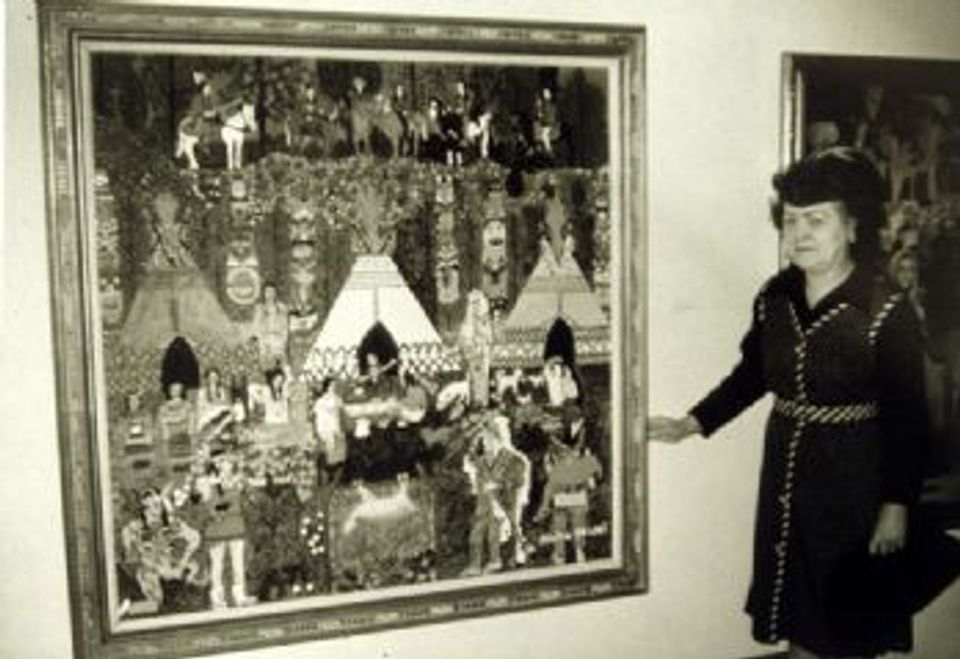Albina Felski

- Also known as
- Albina Kosiec Felski
- Albina Kosiec
- Born
- Fernie, British Columbia, Canada
- Active in
- Chicago, Illinois, United States
- Biography
Felski, who began painting in 1960, wrote: "Im very busey [sic] around the house and I work in a factory I paint in fall, winter & spring time I enjoy summers the most." In 1945 she came to Chicago from Canada and worked for twenty-seven years in an electronics factory, doing machine and assembly work. Like The Circus, [SAAM 1986.65.108] her paintings are usually on four-by-four-foot canvases, and are brightly colored and extremely detailed. Though she has an easel, Felski prefers to paint with her canvas spread flat on a table. In this work, she includes virtually every conceivable circus act, particularly those involving animals. She was often inspired to paint animals—bears, deer, mountain goats, etc.—from photographs taken by her brothers in their native British Columbia.
Lynda Roscoe Hartigan Made with Passion: The Hemphill Folk Art Collection in the National Museum of American Art (Washington, D.C. and London: National Museum of American Art with the Smithsonian Institution Press, 1990)













